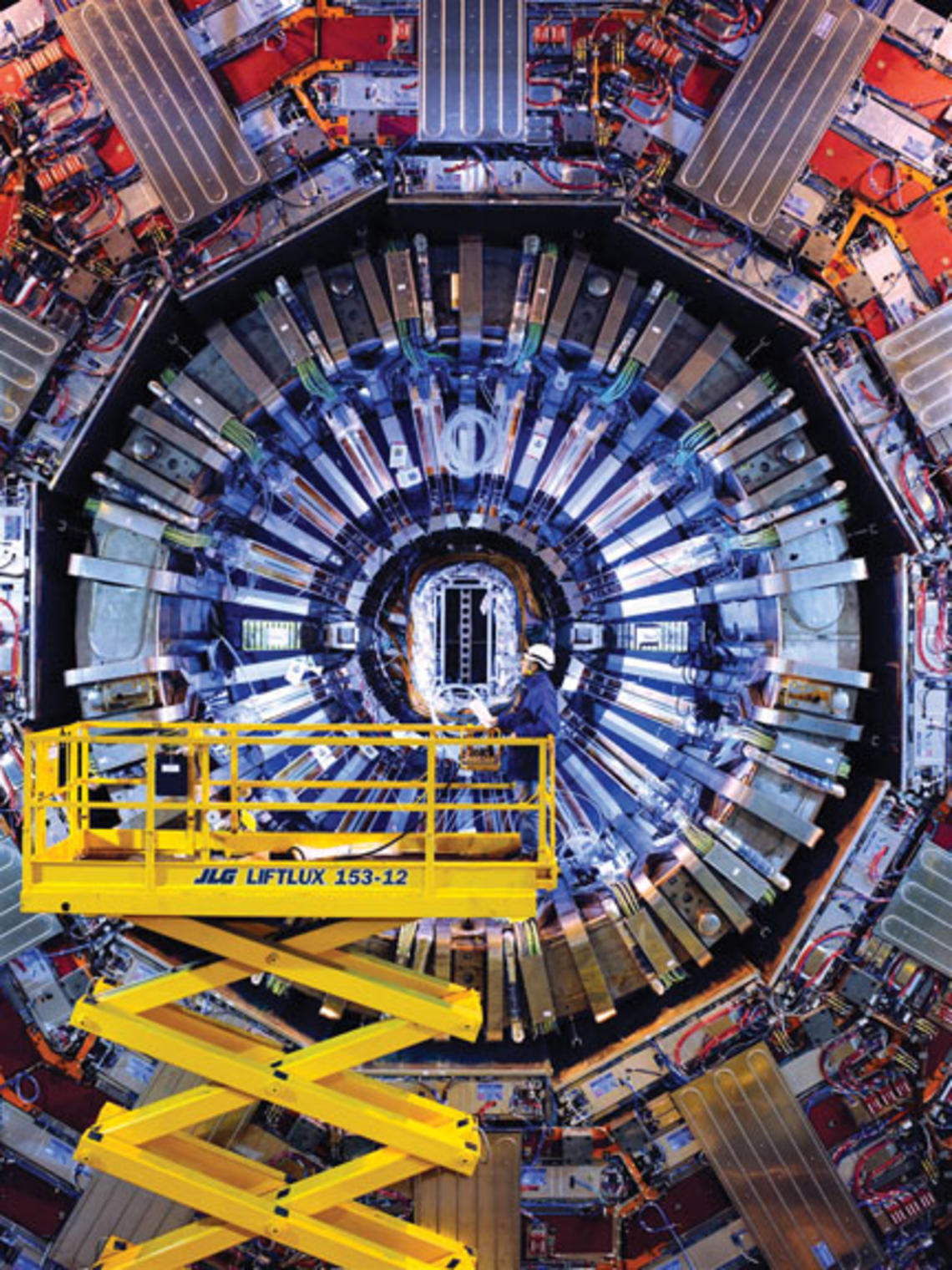
Early on the morning of Sept. 10, associate professor of physics Chris Tully *98 joined about 400 researchers and students at Fermilab in Chicago to watch colleagues in Geneva, Switzer-land, steer the first beam of protons around the 17-mile ring of the Large Hadron Collider (LHC), the world’s most powerful particle accelerator. Live video feeds displayed data as the beam passed different points in the ring, including the site of the Compact Muon Solenoid (CMS) experiment, designed and overseen by a team that includes five Princeton professors.
Excitement and anticipation made the gathering feel “kind of like New Year’s Eve,” Tully said. The ball dropped at 10:28 a.m. in Geneva — 3:28 a.m. Chicago time — when the first beam completed its journey, marking a promising start for a project 14 years in the making. Later in the day, researchers sent another beam around the ring in the opposite direction, and in October, they plan to make those beams collide, starting a series of experiments that could help physicists understand more about the origins of the universe, the mysteries of dark matter, and the mechanism that generates mass.
Tully and Princeton faculty colleagues Daniel Marlow, James Olsen, and Valerie Halyo are members of the CMS team, and A.J. Stewart Smith *66, the dean for research, is a reviewer for the experiment. More than a dozen Princeton postdocs, graduate students, and undergraduates are involved as well.










0 Responses